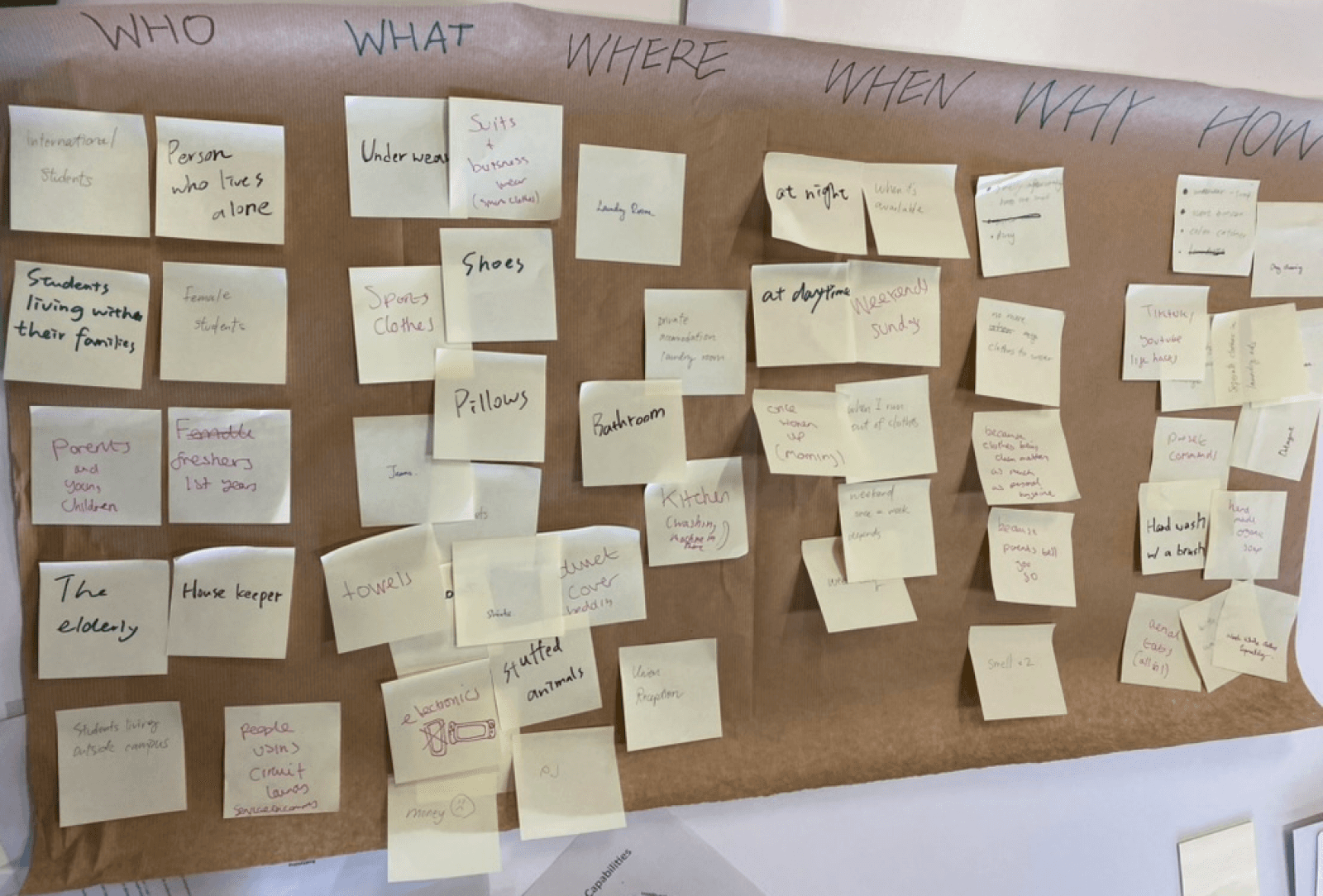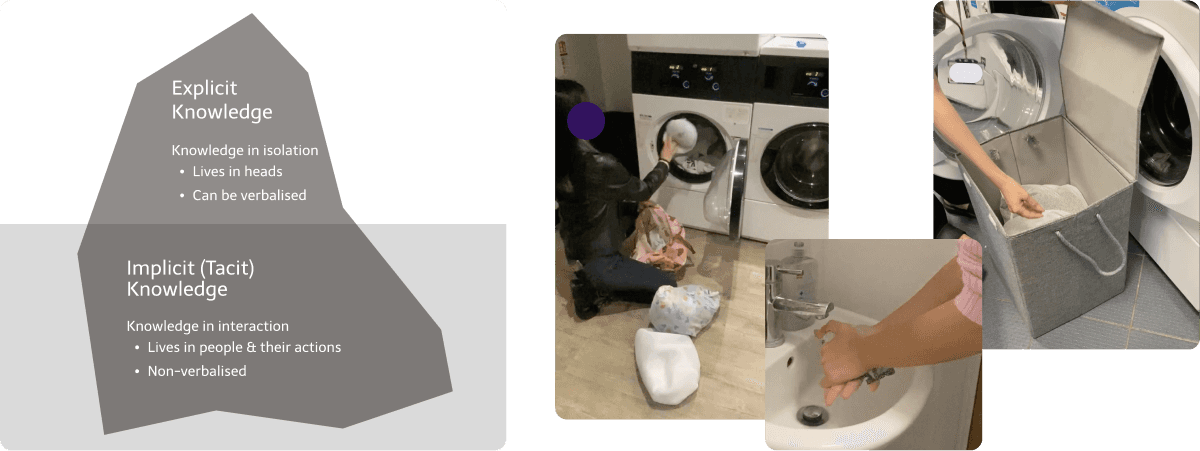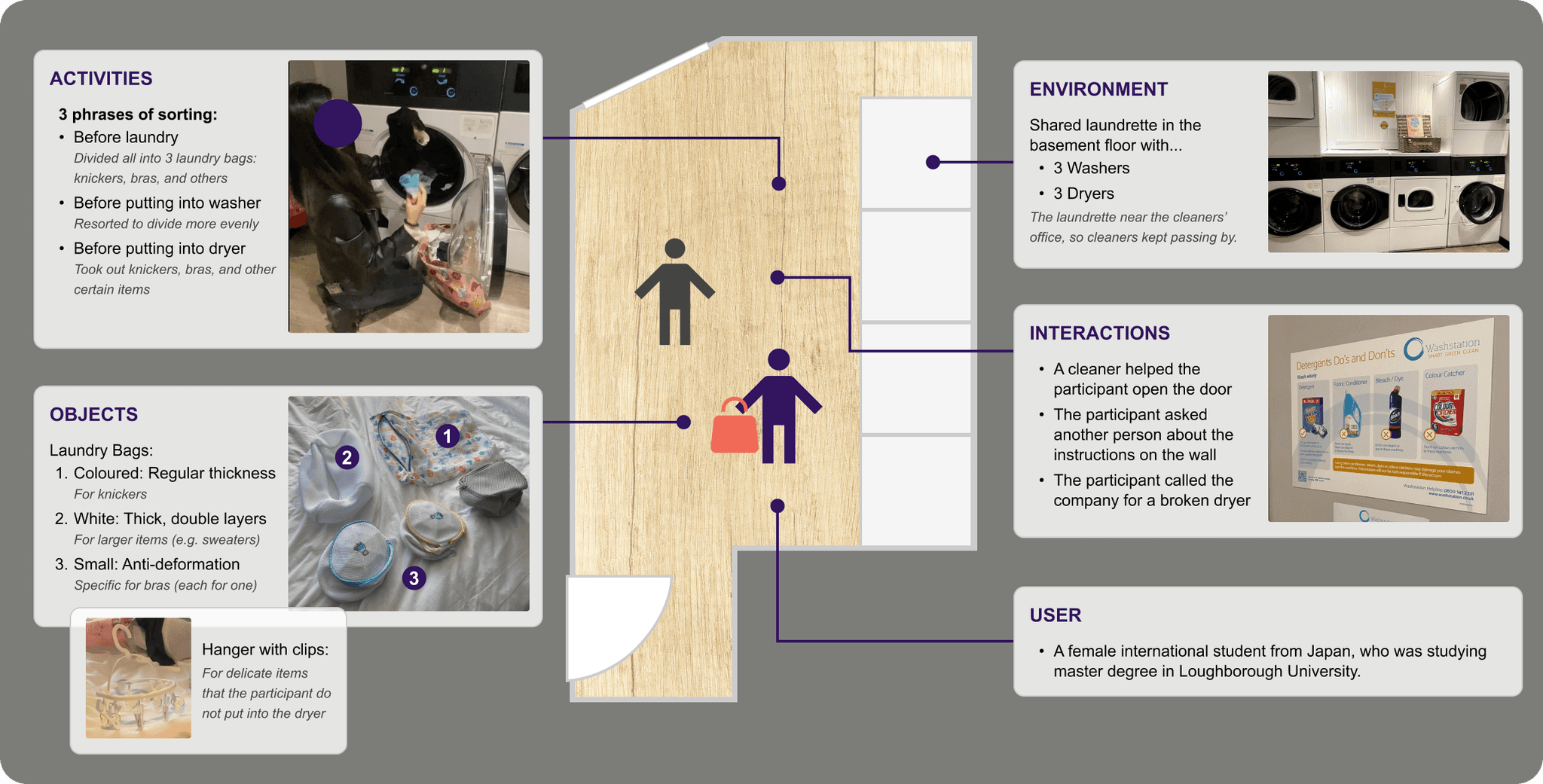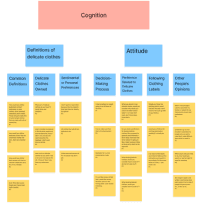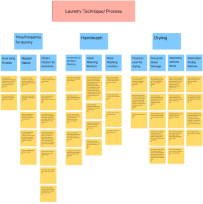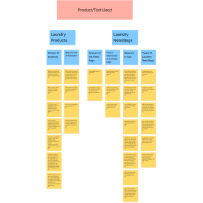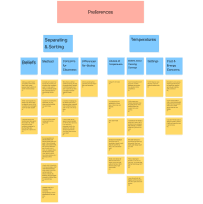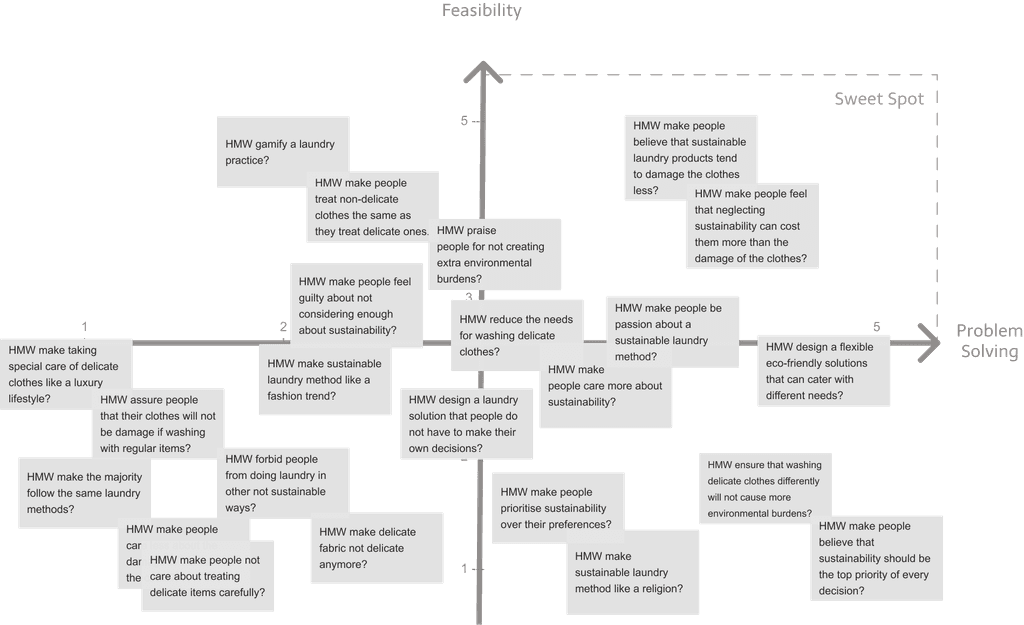Loughborough University - 2023
# UX Research
# Data Analysis
# Sustainability
My Role
Researcher
*This was an individual project
My Deliverables
Semi-structured contextual interview, Design ethnography, Data analysis and Insight generation, Design opportunities identifications
Oct 2023 - Nov 2023 (7 weeks)
Overview
There are several parts within a laundry that may not be eco-friendly. Thus, acknowledging the environmental importance of this issue, this research aimed to focus on people’s laundry behaviours and identify opportunities for possible sustainable solutions. The outcome of this research would be the generation of a key hunt statement and the corresponding practical design opportunities for enhancing user experience and improving sustainability.
Research process
5W1H Ideation
Secondary Research
Semi-Structured Contextual Interview
Design Ethnography
Concluding Findings
Clustering Insights
Prioritisation
How might we...?
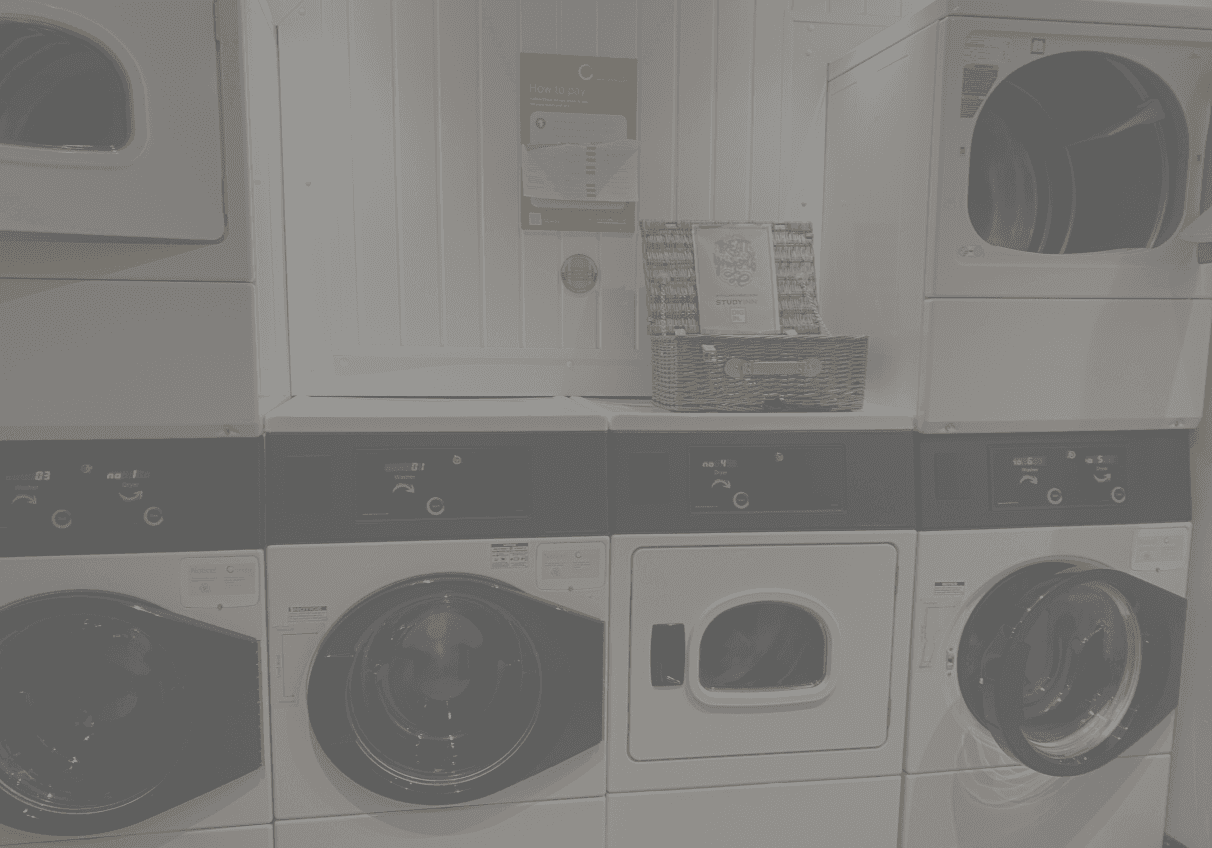
Exploration
Hunt Statement
To research on the way of washing and drying delicate clothes with female international students to identify opportunities for a solution that improves the sustainability of laundry practices.
🎯 The Goal
While it is evident that laundry practices can result in environmental burdens, it may as well suggest potential design improvements in this regard. As existing discussions tend to overlook the nuances of washing delicate clothes, which often require special treatments, this research aims to identify opportunities in this area.
🚧 The Limitations
Due to time constraints, this research was conducted with a small sample, which may potentially affect the level of data reliability.
The user-based research method was constrained due to the private nature of the hunt statement topic.
the Development of hunt statement
The problem-solving questioning method 5W1H was employed for the ideation of the hunt statement.
Students
International Students
International Female Students
Underwear
Delicate clothes
Washing + Drying
Following the brainstorm of the hunt statement, secondary research was conducted to provide a clearer definition of “delicate clothes”, and also validate the importance and relevance of the hunt statement:
➊
Potential risks proved to be associated with the washing process for delicate laundry.
➋
It was proved essential to take the drying process into accounts.
Definition of “Delicate Clothes”
Clothes that are made of fragile fabrics and can be damaged easier compared to regular ones. Examples of a delicate cloth can be: underwear, hosiery, lace, silk, satin, chiffon, etc.

Data Collection
Semi-Structured Contextual Interview
To explore personal laundry experiences and underlying attitudes.
P1
I think it gets more tangled, especially when it's getting dried, I think because dryers are usually much warmer.
P2
I hate it when they are pilling. so if I have to avoid this situation I have to hand wash them.
P3
Things like my bras are usually very delicate and they go bad really easily. So those definitely I put in the laundry now for sure. But for the others, I guess it's based on favourites.
➊
Using a linear process to help interviewees keep up with the flow of the interviews.
The interview questions involved 3 parts:
Warm-up questions
Process based questions
Pre-washing
During washing
Post-washing (drying)
Attitude-related questions.
➋
Using a combined sampling method for efficiency.
Convenience sampling: The subjects defined as ‘students’ due to convenience for the researcher
Purposive selection: The efficient yet valid method was used with all the students.
P1
Female
Korea
Student
P2
Female
Taiwan
Student
P3
Female
Japan
Student
➌
Using psychological technique for data collection
The laddering technique, a variant of the ‘5 Whys’, was utilised to extract more profound and explicit answers from the participants.
Design Ethnography
To extract tacit knowledge and address value-action gaps.
➊
Selecting different observational methods based on each participants
The shadowing method was used for participants 1 and 3, while re-enactment was chosen for participant 2, who conducted laundry in her personal bathroom. The decision was guided by ethical considerations, aimed at respecting privacy and avoiding intrusion during the research.
Shadowing
Followed the participants through the activity, while maintaining a proper distance.
👍 Allows participants to carry out their natural activities without interference.
👎 Questions aroused during the observations may not all be addressed immediately.
Re-enactment
The participants was asked to demonstrate act out their usual activity.
👍 Does not require an actual scenario, suitable for a sensitive nature.
👎 Unable to observe interactions with the environment and the instant emotions.
➋
Recording Activities, Environments, Interactions, Objects, and Users
The observational data was recorded using the AEIOU framework, including recording what participants did, where the activities took place, how people interacted with people or objects, the objects involved, and the associated people and their roles, and relationships in the activities.

Data Analysis
Findings
To extract information for further exploration of insights.
➊
Sorting data with Affinity diagram
An affinity diagram (K-J Method) was employed to organise and analyse all the collected data from both semi-structured contextual interviews and design ethnography.
➋
5 Top-level themes of the findings
Cognition
Includes users’ definitions and attitudes of delicate clothes.
Laundry technique/process
In terms of the time or frequency for laundry, and the details of hand-washing and drying.
Products/tools used
Includes the use of laundry products such as the choice of the measurement detergent, and that of the laundry nets/bags.
Preferences
Such as the thoughts or methods about separating and sorting, or about the temperatures.
Factors that affect the laundry decisions
Includes users’ concerns about damage, money, or sustainability.
Generating Insights
The insights were clustered from a throughout examination of the findings (what was observed or heard), an inspection of their potential meanings, and then a reflection on the significance of each.
What it means: Interpreted about user behaviours and attitudes.
Why it matters: Inference made by the researcher regarding how it related to the hunt statement.

Identify Opportunities
Prioritising Insights
The priorities of the insights were evaluated from 2 perspectives:
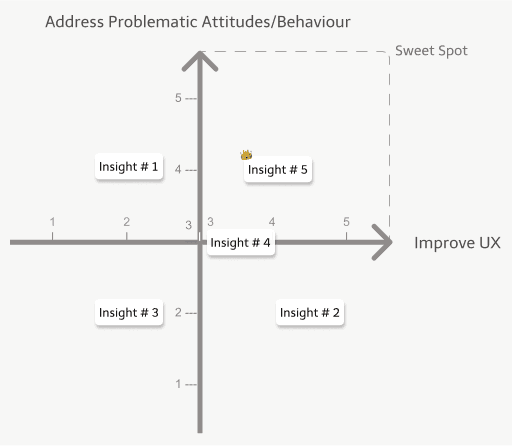
Scale 1
Scale 2
Scale 3
Scale 4
Scale 5
The top-right area of the matrix represents the ‘sweet spot’, indicating that the insights within this area may offer respectively more comprehensive value with the least effort, as they were considered to have ample design opportunities in both aspects.
Design Opportunities
How might we make people believe that sustainable laundry products tend to damage the clothes less?
As it was found that people tend to care more about the damage to delicate items, making sustainability a solution to kill two birds with one stone may encourage people to embrace that.
➊
Using “How might we?(HMW)” with the 3 key insights for meaningful and relevant opportunities
The observational data was recorded using the AEIOU framework, including recording what participants did, where the activities took place, how people interacted with people or objects, the objects involved, and the associated people and their roles, relationships in the activities.
➋
Prioritising opportunities with the levels of problem-solving and feasibility.
The ‘problem-solving’ metric evaluates the extent to which a solution may fundamentally address its corresponding HMW question. Feasibility, on the other hand, was about the level of how feasible questions’ solutions can be.

Takeaway
➊
Professionalism as a researcher
Despite prior interview experience, this was my first systematic and professional approach to interviewing. As a non-designer, I discovered a lack of guidance on ethical considerations. But recognising the significance after this research, I intend to conduct future interviews with greater professionalism.
➋
My understand of "insights"
The concepts of 'insights' and 'findings' used to be perplexing. Also, due to my internship exposure to business analytics, I incorrectly applied methods, focusing on data without design research mindset and tools. But now being familiar with the suitable techniques, extracting design insights is no longer a difficult task.
